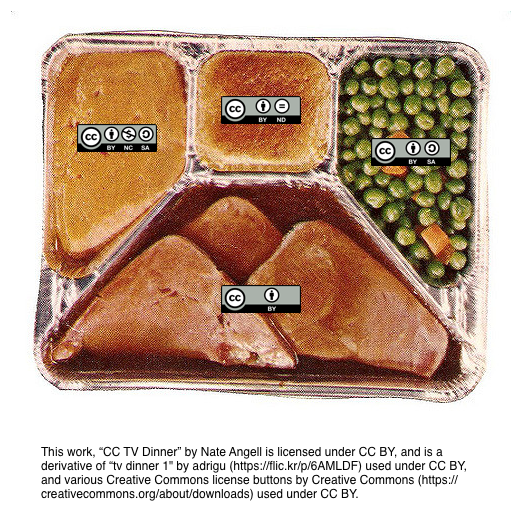1
In the context of using Creative Commons licenses, a collection can be defined as “the assembly of separate and independent creative works into a collective whole” (Creative Commons, 2022, module 4.4). In a collection, each work is being used “as is”, with no or very minimal modifications — for example, spelling corrections — that do not alter the main essence of the work. Examples of collections include but are not limited to:
- anthologies
- an album compilation of hits from the 1990’s
- an album or book reproducing pictures by several photographers
Even though the collection itself can have its own license, this license applies only to original contributions to the collection, such as an introduction, cover, foreword, and the arrangement of items in the collection. Each work used in the collection retains its own copyright and license, which means each of the works in the collection must receive proper attribution according to their individual licensing terms.
Borrowing a metaphor created by Angel (2018), a collection is comparable to a TV dinner food plate: each work is clearly separated and can be “consumed” separately as well.


